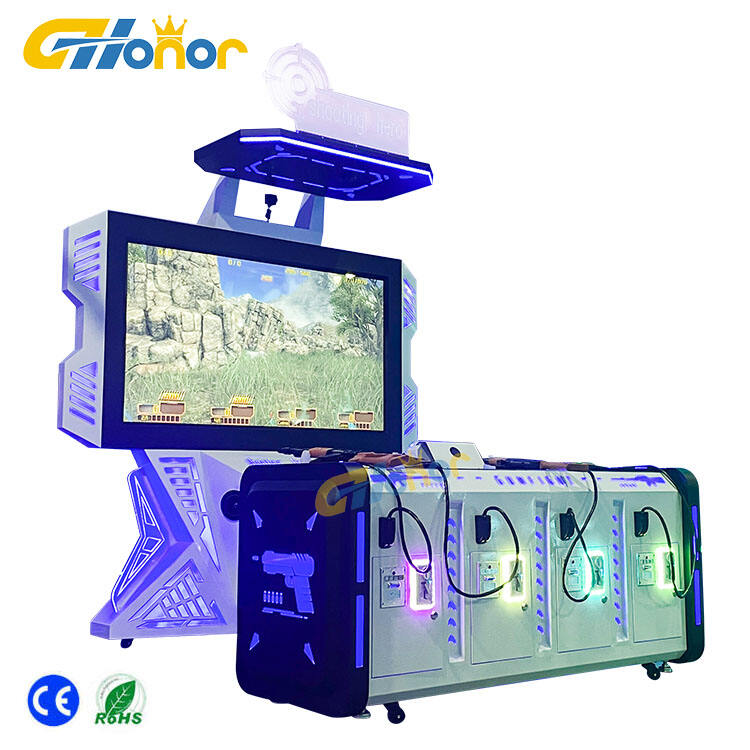A multiplayer arcade machine is a dynamic gaming device specifically engineered to support simultaneous gameplay for two or more players, fostering social interaction, competition, and collaboration in arcades, family entertainment centers, and recreational venues. These machines are designed to capitalize on the excitement of group play, making them powerful attractions that draw crowds, extend playtime, and enhance revenue for operators. Multiplayer arcade machines come in diverse configurations to accommodate different group sizes and game types. Two-player setups are common in genres like fighting games (e.g., Street Fighter), racing simulators, and air hockey, where head-to-head competition drives engagement. Larger models can host four or more players, such as team-based shooters, party games, or cooperative beat ’em ups, encouraging friends or strangers to form teams and work toward a common goal. The physical design often features side-by-side control panels, shared or individual displays, and ergonomic seating (in simulators) to facilitate interaction, ensuring players can communicate and react to each other’s moves in real time. Gameplay mechanics in multiplayer arcade machines are tailored to promote social dynamics. Competitive games may include leaderboards or trash-talking features to fuel rivalry, while cooperative games require players to coordinate strategies, fostering teamwork. Many machines incorporate dynamic difficulty adjustments, scaling challenges based on the number of players to maintain balance and prevent frustration. For example, a four-player zombie shooter might increase the number of enemies to match the team’s size, ensuring the game remains challenging but achievable. Technologically, these machines often boast high-definition displays, immersive audio systems, and responsive controls—such as joysticks, buttons, steering wheels, or motion sensors—that enhance the shared experience. Modern models may include network connectivity, enabling online multiplayer functionality to connect with players on other machines, or local area network (LAN) support for tournament-style play within a venue. Payment systems are flexible, with options for per-player or flat-rate pricing, accommodating group budgets and encouraging larger parties to play. Durability is a key consideration, as multiplayer machines endure heavier use than single-player models. They are constructed with reinforced frames, scratch-resistant screens, and heavy-duty controls to withstand the wear and tear of frequent group play. Safety features like rounded edges, secure seating, and non-slip surfaces protect players during energetic sessions, making them suitable for all ages. For operators, multiplayer arcade machines offer higher revenue potential per session due to multiple players, as well as the ability to attract groups, which tend to spend more time and money in venues. They also serve as focal points in arcades, creating lively atmospheres that attract other patrons. Whether it’s a classic two-player racing game or a cutting-edge virtual reality experience for four, multiplayer arcade machines deliver unforgettable shared moments, making them indispensable components of successful entertainment venues.
